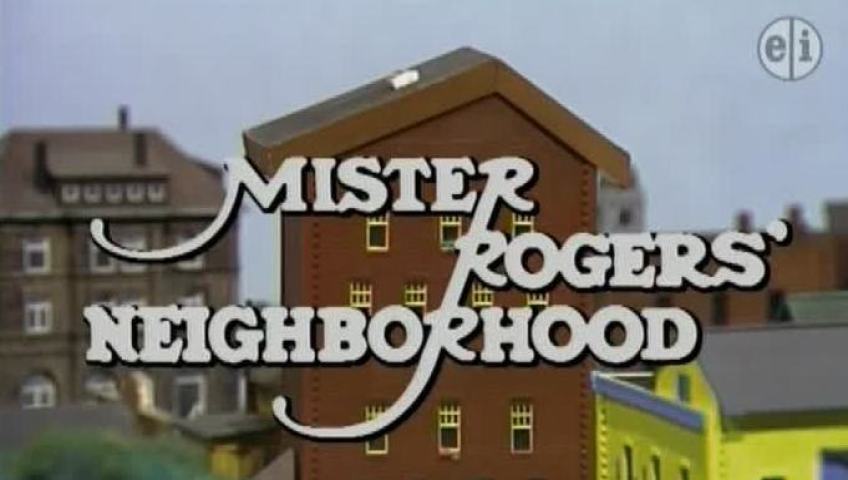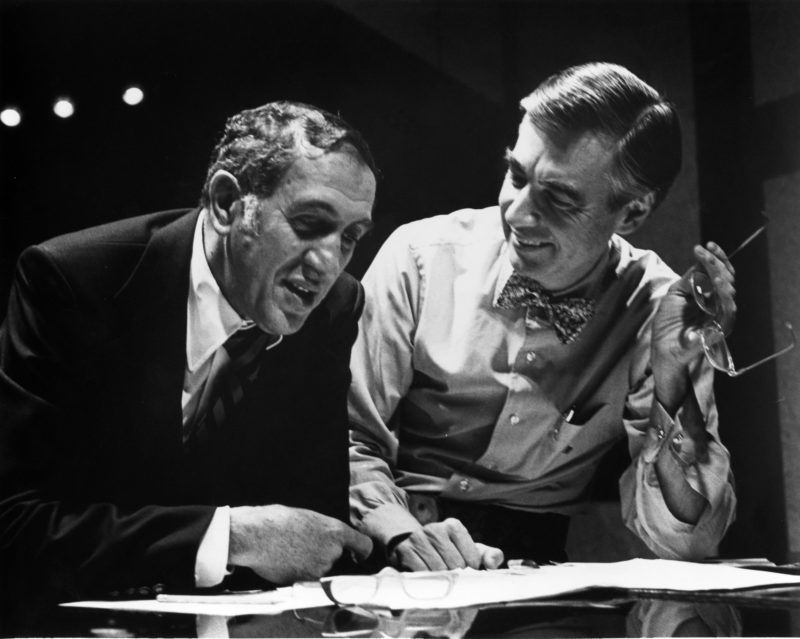
A new episode of The Carl & Daddy Show is here! Right here. We talk about our favorite show, which should be your favorite show, too.

A new episode of The Carl & Daddy Show is here! Right here. We talk about our favorite show, which should be your favorite show, too.

Let’s move onto something more positive and enlightening to get us through the weekend…like, the antithesis of Rush Limbaugh. I want to talk about Fred Rogers–more specifically the music he helped create for Mister Rogers’ Neighborhood, because it’s all I’ve been thinking about lately.
I recently discovered classic episodes were streaming (it’s still on Amazon Prime, FYI), and I thought, “HELL YES,” as one does when discovering Mister Rogers is streaming on Amazon Prime. “I’m going to introduce my kid to Mister Rogers.” But in the back of my mind I thought there was no way a child in the year 2020 would want to hear a dorky middle-aged man talk to them about dealing with emotions and accepting other people through cornball (yet lovely) songs and puppetry (come on…Lady Elaine Fairchilde still freaks me out). Shows how much I know–my 5-year-old loves Mister Rogers. It’s a testament to Rogers, whose genuineness, compassion and kindness are truly something to behold–especially in our current state of affairs (which is the reason I was in tears for probably 90 percent of 2018’s Won’t You Be My Neighbor?).
I love watching the show with my kid. He gets lessons about treating others, and himself, with respect (and I get some good reminders). Plus there’s a bonus: I’ve become absolutely obsessed with the music on the show. Not so much the songs we’ve all heard a million times (although I find myself humming them all. day. long.), but the music in between.
Rogers was a fan of jazz, and a fine pianist himself (he also studied music composition in college). And he was always keen to talk to musicians about their craft, including Wynton Marsalis, Yo-Yo Ma, clarinetist Richard Stoltzman and, of course, my favorite, electronic music weirdo Bruce Haack. But it was Rogers’ musical director of nearly 30 years, pianist Johnny Costa, who delivered the goods day after day. Costa’s fluid playing wasn’t simplified for children’s ears (a condition he gave Rogers, who immediately accepted); it’s emotive and sounds like no one else. As Rogers himself put it, Costa’s playing was “a character of its own.”
It never occurred to me until I revisited the show that the twinkly piano lines that run almost constantly throughout the show were all performed live on set by Costa. And improvised in many instances (even show staples “It’s a Beautiful Day in the Neighborhood” and “It’s Such a Good Feeling” were altered slightly each episode). Which is why I can’t get enough of Costa and his group–rounded out by bassist Carl McVicker Jr. and percussionist Bobby Rawsthorne (who’s also responsible for the vibraphone heard throughout). Much like the show itself, there’s an element of unpredictability that’s exhilarating. Plus there’s some really avant-garde passages that could only come from an improvised setting. Costa is literally playing to every movement of the show–when Rogers heads out to meet people, when the Trolley comes and goes, or even when there’s a knock at the door. It’s fantastic stuff.
When the jazz greats are discussed, you’ll rarely–if ever–hear Costa’s name, partially due to the fact his music is heard almost exclusively by children. Or because it’s become the ubiquitous background noise to Rogers’ soothing voice. Although Costa may not have pushed the genre the same way players like John Coltrane, Ornette Coleman or Albert Ayler did, he’s brilliant in his own right, and his playing is absolutely worthy of discussion.